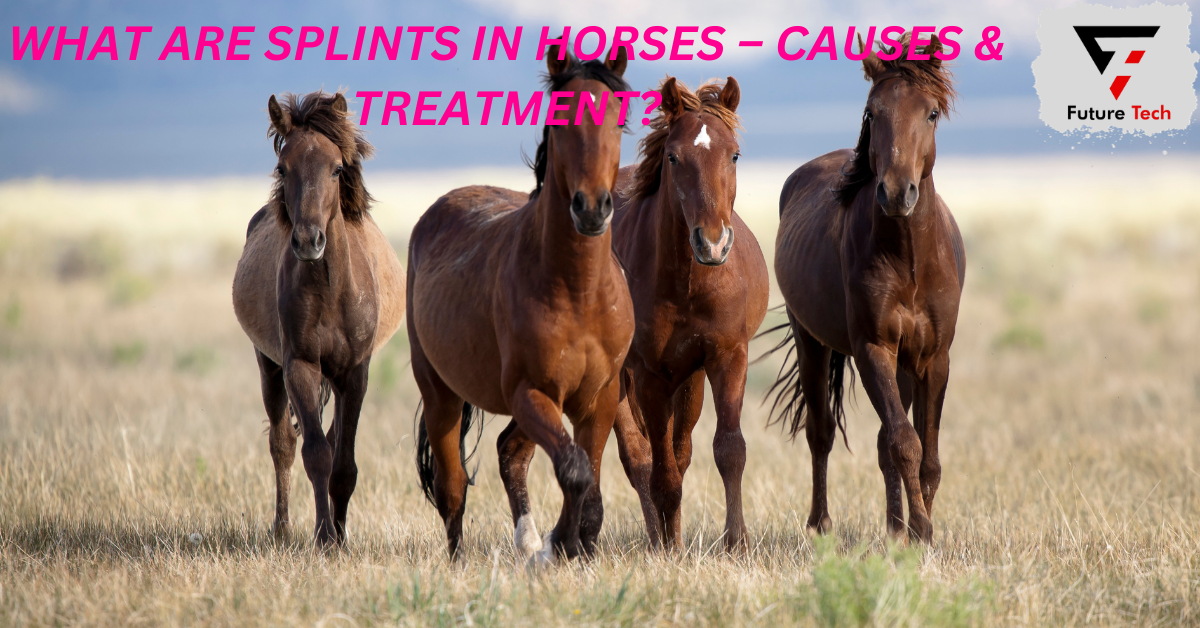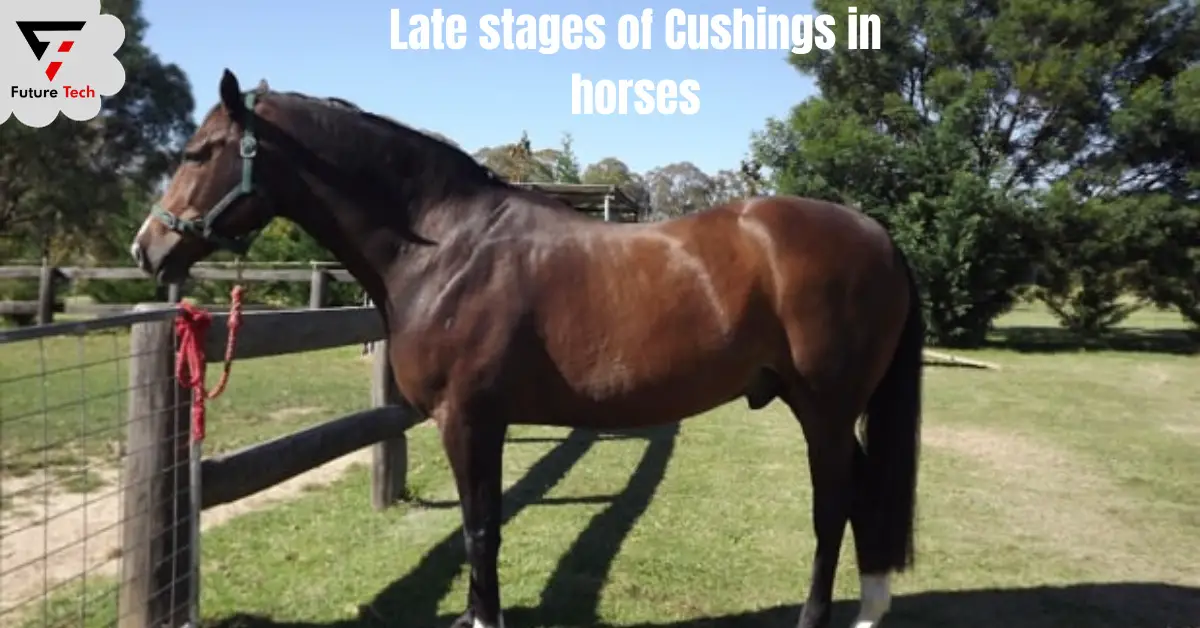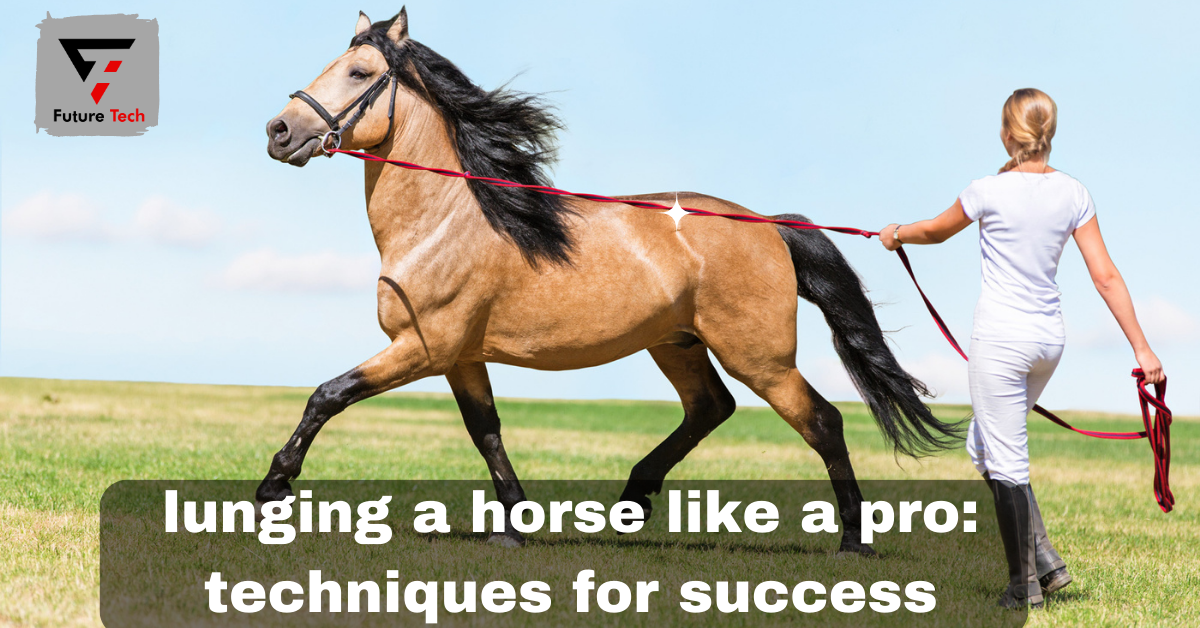A stiff, bony protrusion on the inside (or occasionally outside) of the horse’s lower leg is known as a “splint.” They result from injury to the ligament connecting the splint and cannon or splint bones. That can happen to any age of the horse, although younger horses in training tend to have them more frequently. They may develop as a direct consequence of a blow to the skeleton or multiple concussions on hard surfaces. Since your horse’s legs are incredibly elaborate and shock-absorbing, you must keep them healthy. The animal’s front legs contribute 60-65% of its total weight, with the remaining legs carrying the remaining weight. The majority of the skeletal system in horses has no link to the horse’s front legs; instead, it stays in place mainly by a girdle of muscles that resembles a sling. Splints are more common when the weight-bearing structure of the horse suffers from strain and under duress, but they can also result from conformational flaws. In this article, we will explain splints in horses briefly.
Function and anatomy of the split bone
Remembering that horses’ prehistoric predecessors had several toes is essential to comprehend the role of splint bones. Nevertheless, due to evolutionary processes, horses today walk on a single digit (metacarpal/metatarsal I). The horse’s limbs still have these surviving fingers (metacarpal/metatarsal II & III), but they have undergone significant alteration to become splint bones. The cannon bone is the popular name for metacarpal III.
The cannon bone is medially and laterally situated in relation to the basic metacarpal (forelimb) or metatarsal (hindlimb) bones, also known as splint bones. The underlying purpose of the splint bone, which tapers down nearly two-thirds of the cannon bone, is vestigial, meaning that the bone no longer serves any visible use as it did for earlier ancestors. Splint bones continue to serve kinesiological purposes, primarily supporting the hock, carpal, and tarsal bones. This extra support enables a great range of motion.
The tiny interosseous ligament, a dense fibrous structure, connects the cannon bone to the splint bone. This ligament also called the suspensory ligament, has nerve receptors that notify the horse’s body when an injury results in damage or inflammation. As a result, wounds to this region in horses can cause excruciating pain. Check out our piece on horse hoof pain as well.
Popped splints
The more common ones frequently manifest as a rapidly growing, firm, warm swelling on the cannon bone’s side. Depending on the extent of inflammation, lameness may be evident, but splints can form without discomfort or lameness. The underlying pathology is the rupture of the interosseous ligament or periosteum, the fibrous outer layer of the splint bone. It causes inflammation and the creation of new bone, which is known as the splint bump. Quiet splints typically require little care or rest and can occur virtually overnight without heat, swelling, or lameness.
Fractured splints:
Direct trauma is The most frequent reason for a fractured splint bone. The diagnosis and therapy regimen are determined on the site. It might be challenging to treat a lower splint fracture non-operatively. The fracture may not mend because the fragment frequently travels so much that a typical stabilizing callus cannot develop. If, after a few weeks, no such callus arises or if the suspensory ligament branch, which inserts into the sesamoid bones at the bottom end of the cannon to hold them in place, seems affected, your veterinarian may suggest surgically removing the lower portion of the splint bone.
After they disappear, most cases offer little trouble. Splint bone fractures that occur higher, closer to the knee, are more challenging to treat. Because of the potential for joint instability, surgeons would like not to remove the bone closer to the carpus joint. Rather than eradicating the bone, they may choose, in some circumstances, to implant a stabilizing plate and screws into the limb. In most cases, fractures in the middle of the splint bone are not complex and heal after a few weeks of rest.
Blind Splint
The least common type of splint, known as a blind splint, usually occurs due to damage to the short interosseous ligament next to the medial splint bone. Between the tiny interosseous ligament and the splint bone, it causes a fibrous expansion. Usually, there is no association between this profound injury and inflammation. The most typical sign is lameness, and area-specific anesthetic, nerve blocks, and ultrasonography are frequently used to identify blind splints.
KNEE SPLINT
A knee splint appears as proximal bone edema in the splint bone near the knee. It usually affects the lower leg joints of horses and may lead to osteoarthritis.
SPLINT BONE PERIOSTITIS
The term periostitis refers to the coating that envelops the bone. Periostitis is damaged, soft tissue inflammation ensues, and the periostitis splits from the bone to make room for new bone growth when the splint bone is directly hurt. Either the medial or the lateral splint bone may develop parietal inflammation.
Cause of Splints In Horses
In young horses, a ligament between the splint and cannon bones is highly elastic. The ligament ossifies as the horse ages, fusing the three bones and replacing the ligament with bone. Ossification may cause pain and inflammation. Working, jumping, and running a horse irritates the animal even more during this period. Horses between the ages of two and five typically get splints. The injured limbs are usually the forelimbs. Back leg splints are extremely uncommon. In older horses, the cannon and splint bones are tightly bound together.
On the medial side, or inside, of the forelimbs, splint issues predominate. The medial splint bone is usually injured by its flat surface near the knee. The surface of the lateral (outside) splint bone is more inclined. When weight moves to these bones, the medial splint bone most likely supports greater importance than the lateral splint bone. As a result, the ligament that connects the cannon bone to the medial splint bone experiences greater stress than the outer ligament.
Signs of splints:
Splint-related lameness is most common in two-year-old training horses. The horse’s lameness is most noticeable when it works, trots, or shortly after. Lameness can be sporadic or persistent, lasting up to a year. The horse will recoil if you probe up and down along the cannon bone because you are touching the ossifying area of the ligament. Along the splint bones, there may be a single, massive swelling or several smaller swellings due to ossification. The swelling and pain normally go away once the ligament has ossified.
BEST TREATMENT FOR SPLINTS IN HORSES
Depending on the veterinarian, anti-inflammatory medication and other medications that prevent the animal’s natural healing response of bone growth serve to treat the majority of splint instances. Thanks to developments in veterinary technology, owners can now treat equine splints with frequently prescribed non-steroidal anti-inflammatory medicines (NSAIDs), such as Bute. For most horses, topical anti-inflammatory ointments can relieve discomfort and prevent it from worsening. Corticosteroid injections have the potential to lessen inflammation. Resting horses on a soft surface for at least four weeks is standard protocol. Even when medical or surgical intervention is unnecessary, it is always advisable to consult your horse’s veterinarian before making any decisions.
While most horses have great prognoses, circumstances involving significant new bone growths or in the knee joint are sometimes predictive of worse outcomes. Owners can apply cryotherapy and hydrotherapy to the affected area at home to lessen inflammation. Cold treatments, including cold hosing, can be used several times a day until the swelling goes down. Pressure wraps are another splint treatment; they increase circulation and encourage the affected area to heal.
Encouraging the growth of new blood vessels, alternative therapies, including laser, ultrasonography, and shockwave therapy, hasten the healing process. An alternate non-invasive pulsed electromagnetic treatment exposes the horse’s inside cells to a magnetic field. The electrical impulses react with the ions found in particular cells, increasing activity and speeding up the delivery of nutrients and oxygen to the damaged area. PEMF therapy can help speed up the excretion of waste materials and toxins while also helping to initiate and enhance the healing process at the cellular level.
CAN HORSES GET SPLINTS ON HIND LEGS?
Since all four of a horse’s limbs contain carpal bones, splints could develop on four legs. On the other hand, splints in the front legs of horses are significantly more likely to see veterinarians because of their weight-bearing anatomy and suspensory system.
HOW TO PREVENT SPLINTS IN HORSES?
Conditioning your horse gradually on soft ground will help prevent splints. This is especially important if your horse is young and needs time for their body to adjust. A regular warm-up and cool-down for your horse’s leg is part of conditioning. Another technique to lower the chance of a splint developing is to protect your horses’ legs using splint boots. Hiring a farrier who can maintain balanced hooves and adhere to a regular schedule for trimming and shoeing is also critical. It suggests that horses eat a diet with a constant calcium-to-phosphorus ratio to encourage bone growth. Additionally, ensuring the horse is not overweight is the greatest way to lessen the strain on the bones and suspensory ligament.
HOW LONG DO HORSES’ SPLINTS TAKE TO HEAL?
While splints are by no means a magic bullet, it is true that early identification dramatically improves the prognosis. Variations in the degree of splint severity determine how long it takes for healing. While waiting for the splint to go away can take several weeks or even months to return to normal. It is strongly advised against bringing your horse back to work too soon, which may lead to more bone enlargements.
Summary:
Splines in horses are stiff, bony protrusions on the lower leg, resulting from injury to the ligament connecting the splint and cannon or splint bones. They can occur at any age, with younger horses training more frequently. Horses’ legs are complex and shock-absorbing, and splints are more common when the weight-bearing structure suffers from strain or conformational flaws. The cannon bone, also known as metacarpal III, supports the hock, carpal, and tarsal bones, allowing for a wide range of motion. Splint bones are connected by a dense fibrous structure called the suspensory ligament, which has nerve receptors that notify the horse’s body when an injury results in damage or inflammation.
Splints in horses are caused by the ossification of a ligament between the splint and cannon bones, which can cause pain and inflammation. The most common signs are lameness, which can last up to a year, and swelling along the splint bones. Treatment for splints typically involves anti-inflammatory medication, topical ointments, corticosteroid injections, and resting on a soft surface. Alternative therapies like cryotherapy, hydrotherapy, cold treatments, pressure wraps, lasers, ultrasonography, and shockwave therapy can also help speed up healing. Preventing splints in horses involves gradually conditioning on soft ground, using splint boots, hiring a farrier, maintaining a balanced diet, and avoiding overweight horses. Early identification and treatment can significantly improve the prognosis.




